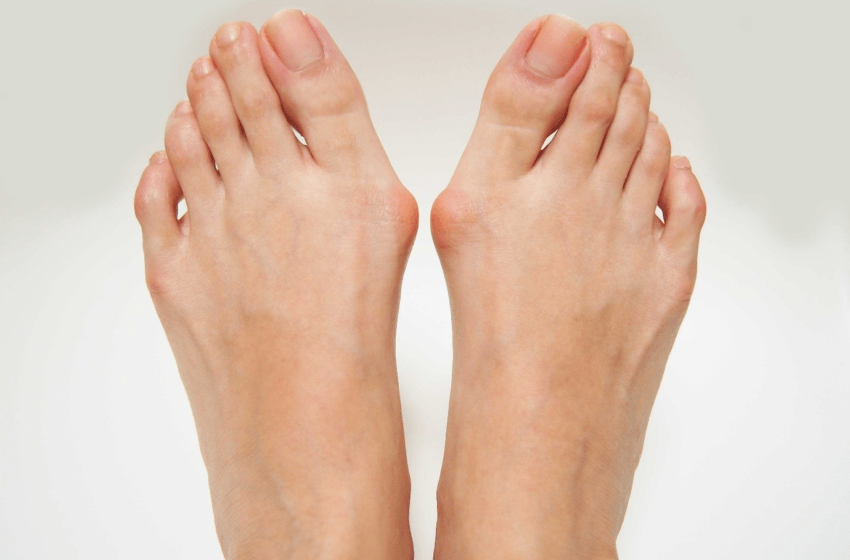What are bunions and the Causes of bunions?

Hallux valgus is a visible bulge on the big toe that causes pain, difficulty putting on shoes, and cosmetic rejection. Conservative or surgical treatment?
The hallux valgus, popularly known as bunions, consists of the medial or valgus deviation (towards the center of the body axis) of the head of the first metatarsal and the approach of the big toe towards the rest of the fingers, which can even cause the overlap of the first two fingers.
It is the most common forefoot pathology and is especially more common in women between 40 and 60. Classically they have been associated with women’s footwear, specifically with the distribution of pressure caused by a pointed shoe with a heel.
From a strictly medical point of view, it is defined as the deviation of more than 15º of the first toe and the formation of an intermetatarsal angle greater than 9º. From these figures, a mild, moderate and severe hallux valgus can be defined.
What part of the foot does the bunion affect?
This condition occurs in the first metatarsal-phalangeal or medial joint, which corresponds to the first metatarsal junction, the bone that forms part of the instep, with the first bone of the big toe. This joint differs from the others in that it is provided with two smaller, pea-shaped bones called sesamoids.
The forefoot is the part of the body that supports the greatest mechanical force. It supports the mechanical force of the weight and the dynamics of the movement when it propels the person forward and receives the impact of each support. Both friction and compression forces are absorbed by the sole and transmitted to the skeleton. Therefore, in the forefoot, there are fatty bodies responsible for dispersing the pressures and protecting the vessels and nerves in the area.
Causes of bunions
The bunions are more prevalent among women and, in some cases, are hereditary. There are three different types of hallux valgus: congenital, acquired, and pathological, the latter being understood as the metatarsal-phalangeal deformity associated with diseases such as rheumatoid arthritis or gout. The acquired one is the most common.
- Congenital Hallux Valgus: The very rare cases of this disease are congenital anomalies of the first toe’s interphalangeal joint.
- Acquired Hallux Valgus: General, extrinsic and intrinsic factors intervene in its appearance.
General factors
- Heredity: the anomaly appears to be transmitted from one generation to another; in fact, there is an entity known as congenital familial hallux valgus. More than 90% of the cases have a first-degree relative with this affectation.
- Age: Bunions can appear at an early age without causing discomfort in young people from 14 to 16 years old ( juvenile hallux valgus ). In adults, bunions are symptomatic from the age of 40 ( adult hallux valgus ).
- Sex: The hallux valgus is a disease of the predominantly female forefoot. This female dominance is related to the use of pointed, tight, and high-heeled shoes. Concerning the male, where it also exists, there is an overwhelming 15 to 1 ratio.
Extrinsic factors
Many specialists consider the poor fit of shoes as the main cause of bunions, but the reality is that people who have never used shoes have this deformity, and people who do wear them have not developed hallux valgus. Therefore, it is accepted that there is a basic structural defect of the foot that predisposes to the development of the disease and that inappropriate shoes accentuate the situation and accelerate bunions’ development.
Intrinsic factors
For the disease to develop, there must be a basic structural disorder.
- Flatfoot: advanced position of the first toe and its metatarsal. An excessively long big toe is the most common cause of bunions. Most bunions are related to Egyptian-type feet and are extremely rare in Greek-type feet. The first long toe inside a shoe is compressed, deviating, creating a vicious cycle that leads to the onset and subsequent development of hallux valgus.
- Metatarsus primus varus: this term refers to the metatarsal separation and internal rotation, considering it as the fundamental cause of hallux valgus.
- Muscle imbalance: it is a clear origin in the cases of hallux valgus in paralytic patients, but in common hallux valgus, the muscular imbalance is considered more a consequence than the disease’s cause. Once established, contracted muscles and displaced tendons can aggravate the poor position of the first toe.